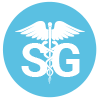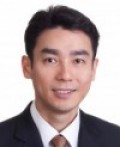Adolescent Scoliosis is a structural three dimensional curvature (C or S shaped) of the spine that occurs at or near the onset of puberty for which no cause has officially been proven. Studies have been done for different probable causes (genetic, brainstem control, hormones such as growth hormone and melatonin) but no firm conclusion was made. There is no evidence to suggest any association with diet, bone density, back posture, or heavy school bags in the causation of the scoliosis. Scoliosis shows up in teenagers from ages 10 to 14, and girls over the age of nine are five times more likely to get scoliosis than boys of the same age.
Scoliosis can cause a shortened stature when untreated. Curves more than 80 to 90 degrees are associated with shortness of breath and risks of heart failure and death. Patients with this degree of scoliosis will also have more concern about their cosmetic appearance. The association of pain is controversial still, with some studies showing little difference as compared with normal population, while others reported significant increase in back pain with increasing severity of the scoliosis.
Examination is done using Adams test, where the patient is asked to lean forward with his or her feet together and bend 90 degrees at the waist. The examiner can then easily observe for any asymmetry of the trunk or any abnormal spinal curvatures. Treatment varies from non-operative (bracing) to operative (surgical correction), which aims to keep the patient’s curvature from progressing beyond the important threshold of 50 degrees at maturity. This threshold is important, because once the scoliosis exceeds 50 degrees, there is tendency to increase well beyond adulthood.
For mild cases, the patients require check-ups every 6 to 12 months. Moderate cases will be advised to wear a brace. The standard brace is a Boston brace, although a dynamic brace (SpineCor) maybe an alternative. Studies have shown that full-time bracing is significantly more effective than part-time bracing in the control of scoliosis. Surgical treatment is indicated in scoliosis of more than 40 degrees in a growing child, and in anyone which has scoliosis of more than 50 degrees. Surgery will fuse the affected spinal bones (vertebrae) in a more normal balanced position, and allow remaining growth to proceed normally in the other parts of the spine.
Different surgical approaches (from the back or the front) can be done depending on the characteristics of the scoliosis. Surgery in our institution is accompanied by spinal cord and nerve monitoring which greatly increase the safety of the surgery. Spinal surgery with modern instrumentation significantly corrects the spinal deformity and stops the curve progression. Minimal access technology used in some selected scoliosis cases will allow for improved scar healing with similar outcome. Patients are usually out of hospital in five to six days and back at school in two to three weeks. They are advised to refrain from excessive bending and heavy lifting for three to four months. They can swim after six months, and participate in athletics after 12 months.
In summary, adolescent scoliosis is a progressive curvature of the spine of unknown cause. Treatment will depend on the severity of the curve, and it is important to start treatment early before the scoliosis worsens. Early intervention will ensure a better outcome.
Contributing Specialist:
Dr Hee Hwan Tak
MBBS, FRCS (Ed), FRCS (Glas), FAMS (Orth)
Adjunct Associate Professor, National University of Singapore
Medical Director and Senior Consultant
Centre for Spine and Scoliosis Surgery
290 Orchard Road, Paragon Medical Centre
#09-09/10, Singapore 238859
Tel: 65-68875000,
Fax: 65-68367617
http://www.css.sg




